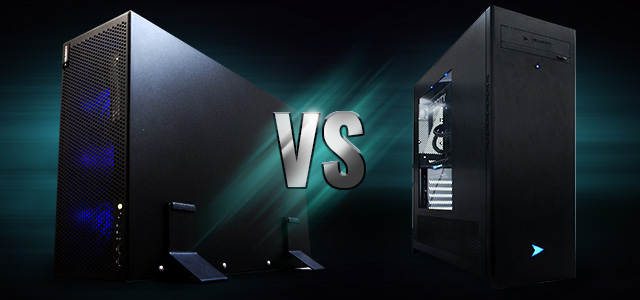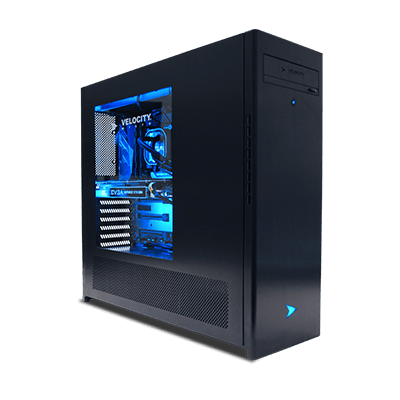
Often, the terms “workstation” and “desktop” are used synonymously, referring to any desktop form factor PC. In our world though, the two are very different, designed for very different types of users. Let’s briefly compare a workstation vs desktop to better understand those differences.

- Hardware – Workstations generally use higher end hardware (sometimes called “workstation-class” components) like motherboards and GPUs. One major differentiator is the use of NVIDIA Quadro vs Geforce graphics, with the higher precision Quadro option usually being used in workstations.
- Price: Because of the higher end hardware, workstations are typically more expensive than your typical home/office desktop.
- Performance: While you can certainly get an extreme level of performance from a desktop (looking at you, Intel Extreme Rig), workstation components can produce several times the power of consumer-level hardware, depending on the configuration, of course. This power results in faster render times, smoother animation, seamless simulation, and more intense machine learning.
- Durability: Many components in a workstation are considered “workstation class” meaning they are held to a higher standard than what’s found in a typical desktop PC, using better quality capacitors and other components. The idea is that these components will be used at high demand, and they must be able to handle these expectations, day in and day out without failure or error.
- Features: Workstation PCs have distinct features that give them their title. These typically include: ECC RAM, multiple processors, or specialized inputs/outputs. All of these parts and components make a workstation PC more reliable and dependable than the typical desktop. For instance, ECC RAM fixes memory errors before they affect your system, which prevents crashes and downtime.
Which is Better – a workstation vs desktop?
The best choice for you depends on what applications you use your PC for. If you typically use your computer for a wide range of projects such as video editing, 3D rendering, machine learning, and CAD on a professional level, then a workstation is the way to go. The additional power and reliability of workstation-class hardware like an NVIDIA Quadro card will speed up your workflow and the increased precision will yield better results.
But, if your video and CAD work is more on the casual level, or if you plan on using your PC for gaming as well as those pro applications, a home office or gaming desktop may be the better choice. Current gen Intel or AMD processors as well as NVIDIA GeForce graphics are incredibly versatile and very powerful in their own right and offer quite a lot of value for most consumers as a result.
Ready to configure your dream PC desktop or workstation? Simply follow the links below to get started or call us directly at 804-419-0900 for assistance.
Josh Covington
Latest posts by Josh Covington (see all)
- RTX 6000 Pro Blackwell - July 1, 2025
- What is CUDIMM? - January 29, 2025
- X870 vs B850: Choosing the Right Motherboard for Your Build - January 17, 2025

Great breakdown of the differences between workstations and desktops! It’s clear that workstations are the go-to choice for professionals handling demanding tasks like 3D rendering or machine learning, thanks to their durability, ECC RAM, and precision hardware like NVIDIA Quadro GPUs. On the other hand, desktops strike a perfect balance for casual creators or gamers with their versatility and value. Choosing between the two really depends on your workload and budget!